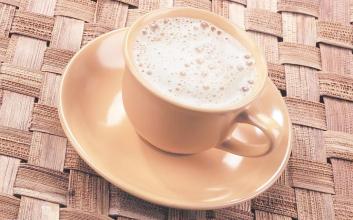Flavor and taste characteristics of Dominica Santo Domingo Coffee Manor with a winding and smooth aftertaste
In 1795, France and Spain signed the Basel Peace Treaty in Switzerland, agreeing to transfer Spain
Dominica
Dominica
The Santo Domingo region in the east of the island was ceded to France, making the Spanish island a complete French colony. Six years later, Toussaint Lovidur, a black Haitian, led other black slaves to revolt against French rule, and in 1801 captured the newly ruled Santo Domingo, unifying the entire Spanish island. [3]
L'Or é al arrived in Santo Domingo in 1801. He abolished slavery on behalf of the French government. In 1802, Napoleon sent troops to conquer the whole island and ruled for several months. In October 1802, mixed-race and black people revolted against French rule and repelled the French army in 1803. On January 1, 1804, the rebels declared Santo Domingo independent and established the Republic of Haiti. But the defeated French still occupy the Santo Domingo area to the east. While the French invaded Spain in 1808, the rebels in Santo Domingo in the eastern part of the island were assisted by Britain and Haiti, which were allied with Spain at that time, and finally repelled French troops. On July 16, 1838, Juan Pablo Duvat and his colleagues established a
Dominica
Dominica
The secret society organization Trinity experience (La Trinitaria) aims to gain independence from the rule of Haiti. Soon after, Matthias Ramon Malia and Francisco del Rosario Sanchez joined the Trinity experience. All three were later called the founding fathers of the Dominican Republic. On February 27, 1844, the people of the Dominican Republic launched a war of independence against Haiti and declared the independence of the Dominican Republic at the same time. The constitution of the Dominican Republic, modelled on the Charter of the United States, was declared on November 6, 1844. In the decades after the independence of the Dominican Republic, its domestic economic and political ups and downs, from 1844 to 1856 was constantly attacked by neighboring Haiti, during this period can be said to be internal and external problems constantly. During the same period, Pedro Santana (commander-in-chief of the army in the early days of the Anti-Japanese War and later became the first, fourth and eighth president) and Buenaventura Baez participated in the War of Independence. (he has been elected as a multinational president five times). The two men were headstrong and unyielding to each other when they came to power. Santana firmly believed that Dominica must be attached to the umbrella of the Spanish Empire in order to avoid the aggression of Haiti. After hoping that France's plan to defend Dominica failed, Baez turned to hope that Dominica could be incorporated into the United States, and finally failed.
The earliest coffee in Dominica was introduced from Martinique (the overseas province of France), dating back to the early 18th century. Dominica is an island country with a tropical climate, with little change in temperature throughout the year. Except for the lower temperature in the Central Cordillera Mountains, which can reach less than 0 ℃ in winter, the average annual temperature in other areas is between 25 and 30 ℃, while affected by the mountain topography, the north and east face the northeast trade wind with an annual precipitation of 1500-2500 mm, which belongs to tropical maritime climate. The mountain forest is dense, the leeward southwest annual precipitation is 500-1000 mm, the dry season is long, belongs to the savanna climate.
The temperate climate in Dominica is conducive to coffee cultivation, and the best places to grow coffee are the Barahona region in the southwest and the Cibao Valley north of Santiago, Dominica's second largest city. The northern region, represented by Hibao, and the southern region, including Okayabani Santo Domingo, produce good coffee. Among them, the coffee produced by Santo Domingo and Barney is famous all over the world, and Dominica coffee is almost synonymous with domiga coffee. Dominica coffee varies slightly according to the altitude of the planting region, the highland is sour, but the taste is rich; the lowland is less sour and tastes smoother. On the other hand, the high-quality coffee beans produced by some Dominican estates have a rich aroma, mellow taste and moderately bright sour taste. It is often compared with the famous Puerto Rican or Jamaican coffee beans. Dominica coffee selection is the most expensive manual way, workers choose the main consideration, one is the fullness of coffee particles, the other is whether it is uniform, grading according to these conditions. The fullest and most evenly grained coffee beans represent the finest and finest coffee in Dominica. And only use the washing treatment method to ensure the high quality and stability of the coffee beans. the coffee beans treated with water washing have a cleaner taste and emit a touch of pure and soft aroma, which can make people feel a faint fruity aroma and a winding aftertaste. Smooth and smooth

Important Notice :
前街咖啡 FrontStreet Coffee has moved to new addredd:
FrontStreet Coffee Address: 315,Donghua East Road,GuangZhou
Tel:020 38364473
- Prev

Introduction to the characteristics of the rich and refreshing Kilimanjaro coffee flavor manor manor in Tanzania
Coffee is one of the main cash crops in Tanzania, ranking fourth after cotton, tobacco and cashew nuts, mainly sold to Italy, Japan and the United States. Coffee exports play an important role in the national economy of Tanzania. Tanzania's main coffee producing area is located at the foot of Mount Kilimanjaro, which is rich in volcanic soil and coffee trees planted here.
- Next

Introduction to the flavor and taste characteristics of the bitter, sweet and fragrant but not sour Bali coffee manor.
Bali Coffee is a tone, a harmony and a song. She is the beat of the waves on the coast of Kuta, the beat of Mozart drums and the chirping of aristocratic people in the cafe. Bali is one of the most beautiful and distinctive tourist attractions in the world, with its unique natural scenery, ancient civilization, unique local folk art and beautiful beaches.
Related
- Detailed explanation of Jadeite planting Land in Panamanian Jadeite Manor introduction to the grading system of Jadeite competitive bidding, Red bid, Green bid and Rose Summer
- Story of Coffee planting in Brenka region of Costa Rica Stonehenge Manor anaerobic heavy honey treatment of flavor mouth
- What's on the barrel of Blue Mountain Coffee beans?
- Can American coffee also pull flowers? How to use hot American style to pull out a good-looking pattern?
- Can you make a cold extract with coffee beans? What is the right proportion for cold-extracted coffee formula?
- Indonesian PWN Gold Mandrine Coffee Origin Features Flavor How to Chong? Mandolin coffee is American.
- A brief introduction to the flavor characteristics of Brazilian yellow bourbon coffee beans
- What is the effect of different water quality on the flavor of cold-extracted coffee? What kind of water is best for brewing coffee?
- Why do you think of Rose Summer whenever you mention Panamanian coffee?
- Introduction to the characteristics of authentic blue mountain coffee bean producing areas? What is the CIB Coffee Authority in Jamaica?

